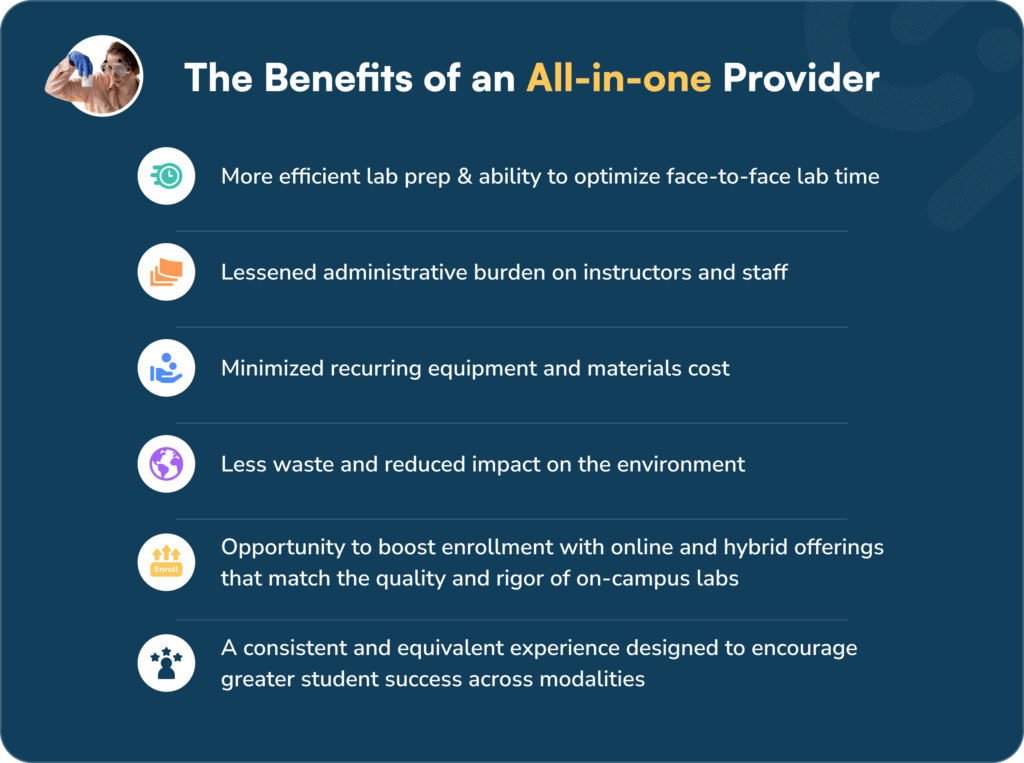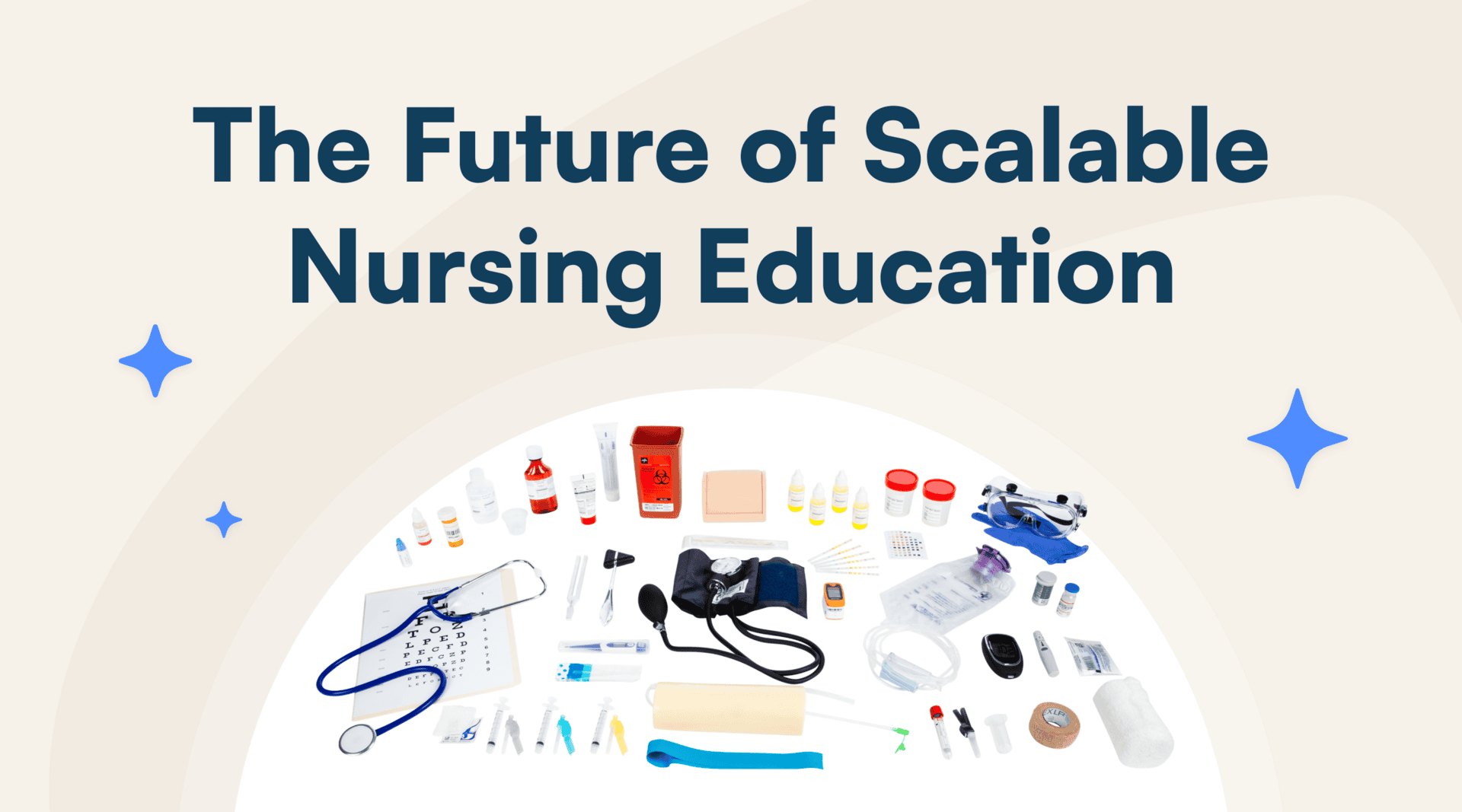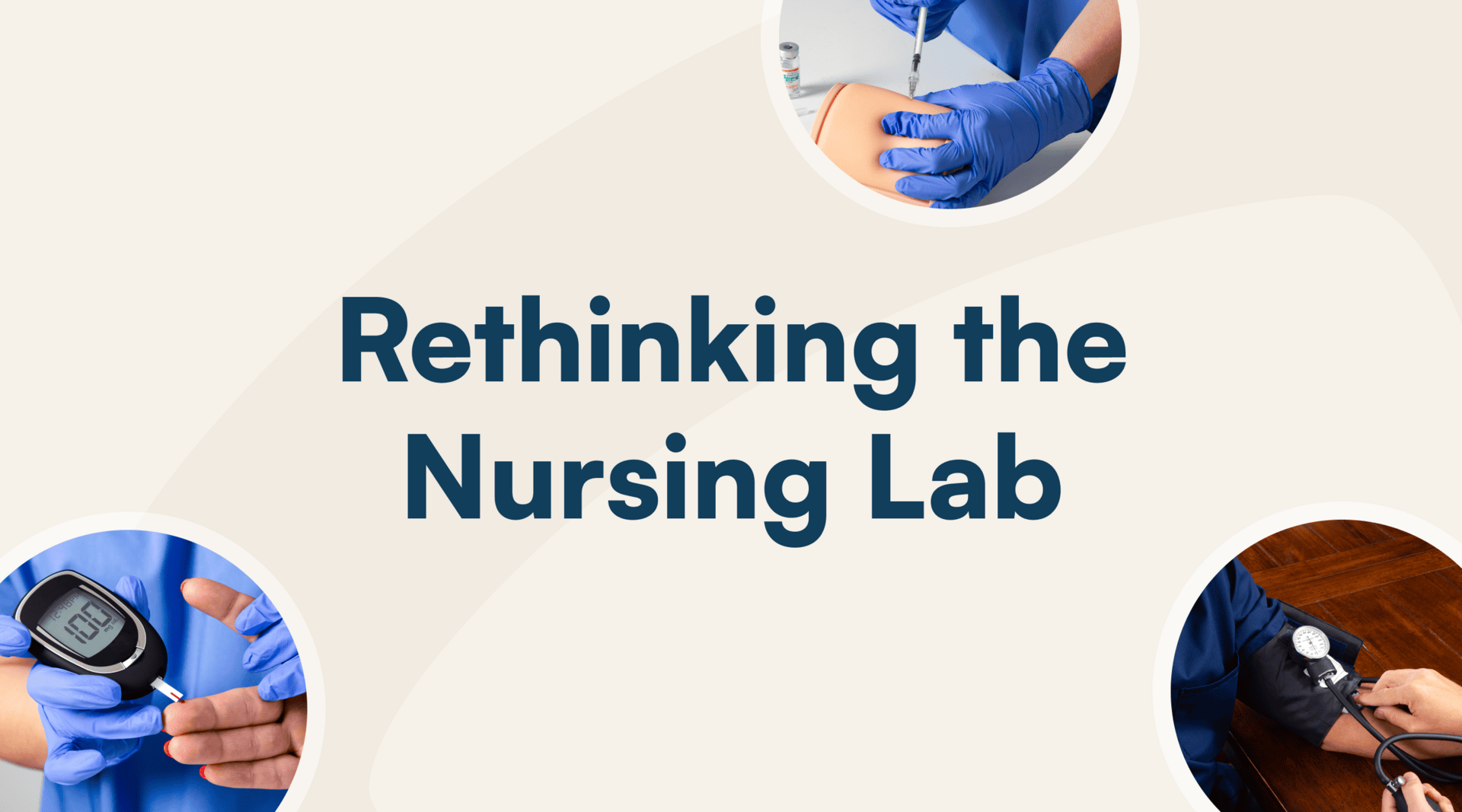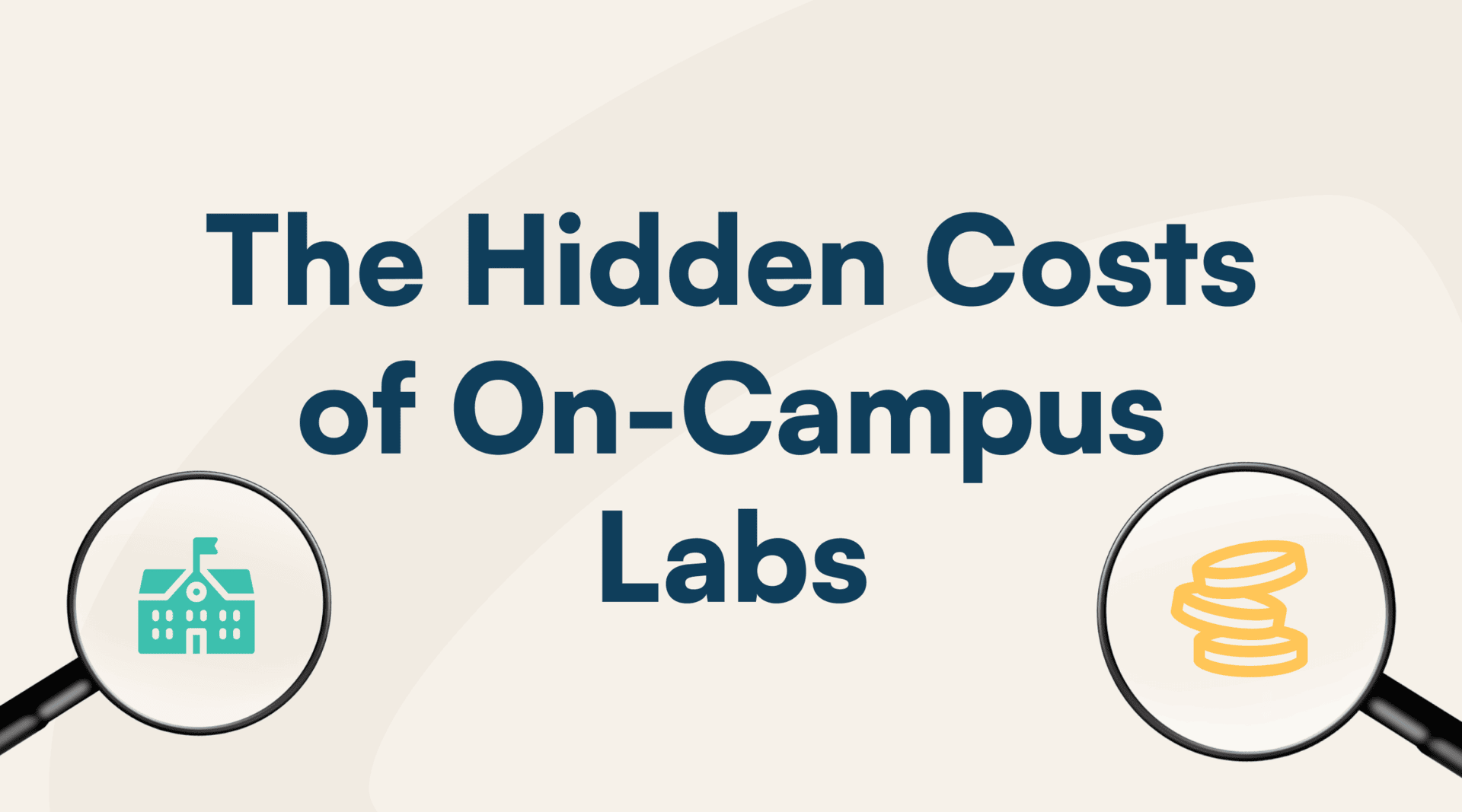Hundreds of thousands…of dollars…each year.
That’s what you’re spending every year to maintain your lab. Of course, this operating cost depends on the size, number, and complexity of your facilities. But it’s also only the monetary expense.
From consumable supplies, materials, and equipment maintenance to the technology your labs use, offering robust on-campus lab courses is a cornerstone of your academic mission, showcasing a commitment to practical, experiential learning. And yes, students enrolling in your on-campus lab course expect a state-of-the-art laboratory experience. However, behind the scenes, these labs come with a hidden price tag. Beyond the initial costs of establishing the lab—which can range anywhere from $200,000 up to a million—maintaining on-campus labs demand significant financial, environmental, and administrative resources. These hidden costs can strain budgets, limit program expansion, and force difficult trade-offs for your program, begging the question:
Are your on-campus lab courses costing you more than you realize?
We’re exploring the often-overlooked financial and non-financial costs of on-campus labs, how they might be hindering program growth, and how a more strategic, cost-effective approach can help you grow your program while ensuring quality.
Your Typical On-Campus Lab Costs
These are the costs you know well. The financial expenses of your on-campus lab include equipment, maintenance, materials, and staffing.
Initial Construction and Setup
The average cost of constructing a modern lab ranges from $350 to $1,300 per square foot, depending on its complexity and size. For example, a new biochemistry lab might require $5 million in construction and $2 million in specialized equipment. But let’s assume your on-campus lab facilities are established. You now have ongoing operational expenses to keep the facility up to date.
Ongoing Operational Expenses
Operating an on-campus laboratory entails several ongoing financial obligations that extend beyond initial setup costs. These expenses are crucial for maintaining a safe, functional, and compliant learning environment:
- Facilities and Administrative (F&A) Costs: These encompass expenses such as building maintenance, utilities, and compliance with safety regulations. For instance, the University of Michigan identifies F&A costs as including “the construction and maintenance costs of laboratories and high-tech facilities; energy and utility expenses; and safety, security, and other government-mandated expenses.”
- Personnel Costs: Salaries and benefits for laboratory staff, including technicians, safety officers, and administrative personnel, represent a significant portion of ongoing expenses. For example, on average, institutions spend around $60,000 annually on a lab technician salary, not to mention an additional cost for specialized training and expertise.
- Equipment Maintenance and Upgrades: Regular servicing, calibration, and replacement of laboratory equipment, and upgraded equipment are necessary to ensure optimal performance and compliance with research standards.
- Consumables and Supplies: These are your every-day lab necessities. Continuous procurement of chemicals, reagents, and other laboratory essentials is required to support ongoing research activities.
- Regulatory Compliance: Adhering to federal and state regulations involves costs related to safety protocols, waste disposal, and ethical standards.
- Information Technology Infrastructure: Maintaining and upgrading IT systems for data management, high-speed internet, and specialized software are essential for modern laboratory operations.
- Insurance and Liability: Laboratories must secure insurance to cover potential risks, including accidents and equipment damage, adding to the financial responsibilities.
While securing government-based awards and private funding are options, most institutions struggle to sustain lab maintenance costs after receiving initial funding for its construction.
The Hidden Costs of On-Campus Labs
The truth of the matter is that you’re also bearing an incredible number of expenses when it comes to your on-campus labs. Think of these expenses as the fine print. They’re hard to put a number to, are sometimes unexpected, and often overlooked. Nevertheless, they’re a drain on your resources.
Time, Space & Resource Constraints
Operating a lab isn’t just about funding equipment; it’s about managing a host of intertwined responsibilities:
- Faculty and Staff Resources: If you’re lucky enough to have a dedicated lab manager, you still have that expense to incur. Now without a dedicated lab manager, the responsibility falls you and perhaps some teaching assistants to dedicate hours to prep, which includes:
- Time spent on tracking and maintaining inventory
- Time spent on sourcing materials
- Time spent ordering from multiple places
- Time spent setting up materials
- Time spent cleaning up
Not only can this responsibility lead to burnout, it’s time spent that otherwise could be spent supporting students or working on professional development.
- Wasted F2F Lab Time: In a survey of nearly 2,000 surveyed students, 50% said a lack of confidence and feeling unprepared were their biggest challenges. Students often only get into lab mode when they step foot in the lab, which leads to a host of problems. Their lack of preparedness means they’re more likely to damage or break equipment, while instructors have to spend more of their valuable teaching time reviewing techniques, protocols, and the connection to theory and concepts. This doesn’t leave a whole lot of time for observation, analysis, and discussion.
- Physical Space Challenges: Labs require large, specialized areas that without consistent on-campus enrollment might go underutilized. Imagine a 10,000-square-foot lab that operates at 50% capacity but could house multiple classrooms or a student wellness center instead.
- Supplies & Materials Costs: Often unpredictable and usually increasing, the cost for supplies, including last-minute purchases, start to add up. Plus, some of the largest suppliers often provide research-grade equipment that is more expensive than you might need for transitional on-campus labs.
- Maintenance and Upgrades: Outdated facilities can lead to inefficiencies as well as turn off potential students—further diminishing your enrollment pipeline and inflating the financial burden while limiting your lab’s effectiveness.
Environmental Impact: Material Wastage and Management
Labs are resource-intensive spaces, often contributing to environmental strain.
- Material Wastage: Labs frequently require replenishment of consumables, such as chemicals and biological samples, leading to significant waste. Add in the cost of expired chemicals or materials that aren’t stored properly and managing and disposing of hazardous materials adds another layer of cost and complexity.
- Energy Consumption: Statistics show labs use 4–5 times more energy than typical commercial office spaces, largely due to energy-hungry equipment like freezers, fume hoods, and ventilation systems. These high-energy demands also increase a campus’s carbon footprint.
Administrative Burden
Finally, running a lab isn’t just a logistical challenge; it’s an administrative one. For example, institutions must adhere to strict OSHA and EPA standards, requiring regular inspections and audits. These activities can consume thousands of staff hours annually, diverting attention from other priorities. This administrative complexity adds hidden costs to the equation.
How to Operate More Efficient On-Campus Labs
To run more cost-effective and efficient on-campus labs, programs need to streamline inventory management. Implementing a modern approach to inventory–from supplies, materials, and equipment–can help faculty track stock levels and expiration dates, reduce waste, and prevent last-minute supply shortages. Below are some ways to prevent hidden costs from eating away at your budget.
- Get exactly what you need, when you need it: If you’re focused on on-campus and online lab courses, this option might be right for you. Get pre-packaged chemicals in microscale, ready for students to use, without having to worry about storing and disposing of large amounts of chemicals. With different lab subscription tiers, you can get a comprehensive set of materials delivered on your schedule, including a full range of chemicals and supplies, with predictable costs and reliable delivery.
- Use ready-made lab kits to simply prep: With customizable kits of materials and supplies for specific lab courses sent directly to students or bookstores, students have everything they need for your on-campus labs, including peer-reviewed curriculum that guides students through labs. This not only ensures quality and consistency across sections, but it reduces prep time and waste, as well as the need for dedicated lab managers—freeing up your time to focus on teaching.
- Expand delivery methods and strike the right balance of on-campus, hybrid, and online offerings: More than half of the 300 surveyed deans/department chairs and instructors cited declines in enrollment in on-campus labs, while nearly 75% reported continued growth in online options and increases in demand for hybrid/blended courses. To keep up with growing demand for more flexible learning options and eliminate the stress over lab space constraints, consider creating online and hybrid versions of your on-campus lab courses. Still, consider using the ready-made hands-on kits to further reduce hidden expenditures and create equivalent experiences without the extra work.
- Consider using virtual pre-lab simulations as a part of your on-campus lab course. As one student respondent to our 2024 Annual Lab Report shared, “I highly recommend that my course add virtual simulations because it would prepare me and other students for the on-campus lab and make us more familiar with lab safety in reality, as well as how to use equipment and instruments.”
In fact, 83% of students said that a virtual pre-lab that included a review of lab procedures, summary of safety protocols as well as a simulation of a trial experiment would help them feel more confident and prepared for an in-person lab.
“Because of the limited time in the lab room, some of our procedures are so simplified that students don’t get to observe both positive and negative controls, or make a labeling mistake that invalidates their data, and we don’t have time to repeat a trial/sample. For me, the limited time in the lab room is the biggest hurdle both in terms of teaching appropriate technique as well as collecting enough data for a well-supported conclusion in the lab report,” shared one chemistry instructor.
The Impact of Streamlining Lab Management On Campus
In addition to expanding the ways in which you offer courses—giving you a bigger pool of students to market to—you’ll end up saving a lot on those hidden costs.
Take it from program coordinator and instructor at Aiken Technical College, Lisa Jones, who uses ready-made kits for her on-campus pharmacy technician courses.
“Having everything together in one place removes the burden of sourcing materials,” she said, adding, “I spend less time tracking down items and more time focused on teaching and learning.”
Limited lab space means it’s critical to be able to maximize use of resources. With large incoming first-year classes coupled with limited lab resources and space, and only four faculty members, forensic science instructors at the University of Nebraska use pre-packaged, hands-on kits for their on-campus lab courses, saving hours each day.
Without the need to prep materials for labs, instructors prioritize their time, building a life-like crime scene that strategically aligns with lecture and lab learning. As a result of using an all-in-one provider, the program was able to minimize prep time, increase efficiencies, and expand to 5 more sections.
Dr. Charles Murrieta, Professor of Forensics at UNL says the kits are exactly what they needed to streamline prep. “We have limited lab space, resources, and instructors. The kits include all the lab-grade materials we need. They’re safe for shipping, for student handling, and don’t contribute hazardous waste to the environment. The labs also don’t compromise on quality. They’re identical to what I’d do if I had to do it from scratch.”

Whether adding new courses, accommodating larger class sizes, or overcoming limited staff and resources, hands-on and virtual labs, ready-made kits, and effective lab management solutions ensure that growth is efficient, cost-effective, and sustainable.
Final thoughts: a best of both worlds approach requires strategy
On-campus labs have long been a symbol of rich innovation and hands-on learning, but their hidden costs—financial, time, spatial, and environmental—are a growing challenge for institutions.
With a more holistic understanding of these challenges and a strategy that balances those constraints with a quality educational experience, you have the opportunity to build a more sustainable and accessible program. An online or hybrid learning experience doesn’t have to sacrifice quality for affordability, just as on-campus labs don’t have to break the bank to be effective. You can embrace a smarter, more comprehensive solution that meets the needs of students and educators alike, while supporting learning in all environments.
You’ll expand the reach of your program, boost enrollment, and provide a consistent learning experience across all modalities and that in itself is PRICELESS.
Discover more articles

Science Interactive Launches New Nursing Fundamentals

What Clinical-Ready Actually Looks Like (And How to Get There Sooner)


